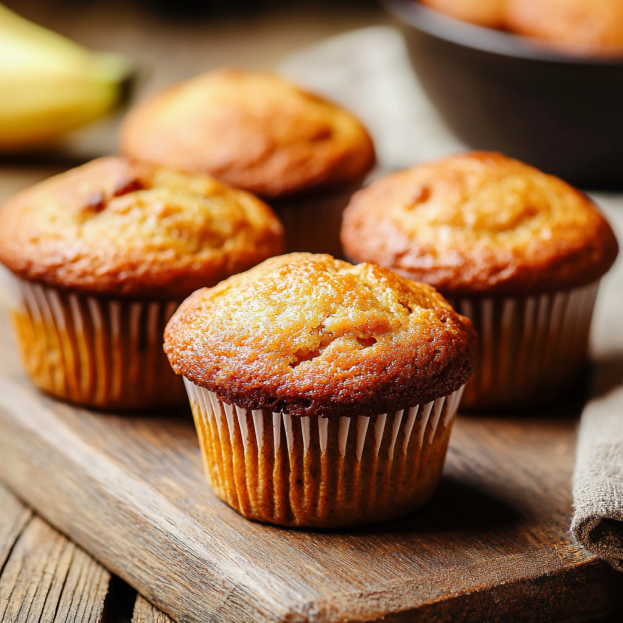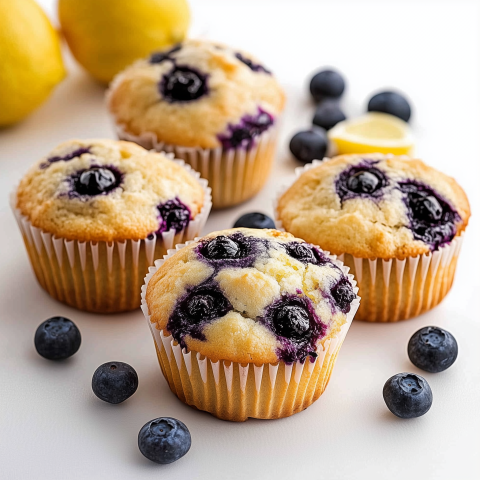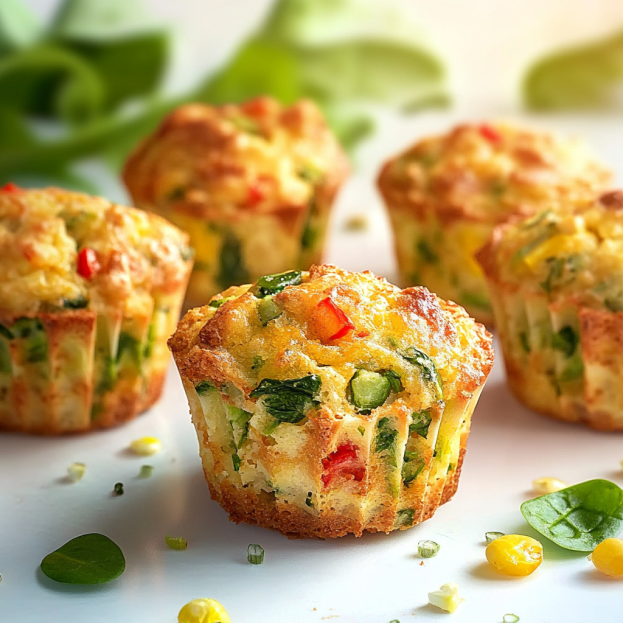Table of Contents
Protein Breakfast Muffins
Starting your day with a protein breakfast muffins boosts your energy and health. A tasty way to do this is by eating healthy muffins in the morning. These muffins are full of high-quality protein to keep you full until lunchtime.
Imagine having a tasty and healthy breakfast that’s simple to make and portable. In this article, we’ll look at the good things about protein-rich breakfasts. We’ll also share tips on making the most of your morning meal.
Key Takeaways
- Learn how to make nutrient-dense muffins for a healthy breakfast.
- Discover the benefits of incorporating protein into your morning meal.
- Understand the importance of a balanced breakfast for overall health.
- Explore tips for customizing your muffins with various ingredients.
- Get insights into the nutritional value of different types of protein.
Why Protein Breakfast Muffins Are the Perfect Morning Meal
Starting your day with protein breakfast muffins can give you more energy and happiness. These muffins are not just easy to eat in the morning. They also have lots of good stuff that makes you feel better overall.
Nutritional Benefits of High-Protein Breakfasts
High-protein breakfasts, like protein muffins, are key to a healthy diet. They keep you full longer, so you don’t need snacks in the middle of the morning.
Blood Sugar Regulation and Energy Levels
Eating a high-protein breakfast helps keep your blood sugar steady. This stops big ups and downs in energy, which is great for people with tight schedules.
Muscle Maintenance and Recovery
Protein is vital for keeping muscles strong and recovering. Eating muffins with enough protein helps your muscles, which is good after working out.
Convenience Factor: Grab-and-Go Nutrition
Protein breakfast muffins are super convenient. They’re great for a quick breakfast, perfect for when you’re in a rush.
Cost-Effectiveness of Homemade vs. Store-Bought Options
It’s cheaper to make your own protein muffins at home than to buy them. Plus, you can pick the ingredients, making sure they fit your diet.
Essential Ingredients for Protein-Packed Breakfast Muffins
Creating protein-packed breakfast muffins means picking the right ingredients. You want a mix that’s both tasty and nutritious. The right ingredients will make your muffins not only delicious but also good for you.
Protein Sources: Powders, Greek Yogurt, and Nut Butters
There are many protein sources to choose from. You can use protein powders, Greek yogurt, or nut butters. Protein powders are great because they’re packed with protein and easy to use.
Choosing the Right Protein Powder
Choosing a protein powder depends on what you like and need. Whey protein is good because it’s easily absorbed by the body. For those who can’t have dairy, pea and rice protein are better options.
Plant-Based vs. Animal-Based Proteins
Deciding between plant-based and animal-based proteins depends on your diet. Plant-based proteins are perfect for vegans and those with dairy allergies. Animal-based proteins, on the other hand, have all the amino acids you need.
Flour Options: Regular, Whole Grain, and Gluten-Free Alternatives
The flour you pick changes how your muffins taste and feel. Whole grain flours add more fiber. Gluten-free flours are for those who can’t handle gluten.
Natural Sweeteners and Flavor Enhancers
To sweeten and flavor your muffins, try honey, maple syrup, or stevia. Vanilla extract or cinnamon can also make them taste amazing. This way, you get to enjoy protein powder banana muffins or banana protein muffins that are both tasty and healthy.
Kitchen Equipment You’ll Need
Having the right kitchen tools is key for making tasty protein muffins recipes. You’ll need some basic equipment to make sure your muffins are perfect.
Muffin Tins and Liners: Sizes and Materials
A muffin tin is the first thing you need. They come in sizes like 6-cup or 12-cup. You can choose from non-stick metal, silicone, or ceramic. Non-stick tins make muffins easy to remove, or you can use liners for easier cleanup.
Mixing Tools and Measuring Equipment
You’ll need a big bowl, a whisk, and a spatula for mixing. A digital kitchen scale is also key for precise ingredient measurements. Measuring cups and spoons are handy too.
Optional Specialized Tools for Advanced Recipes
For more complex recipes, a food processor or blender is useful. They help mix wet ingredients well. A silicone spatula with a heat-resistant handle is also great for scraping hot bowls.
| Equipment | Description | Usefulness |
| Muffin Tin | Baking container for muffins | Essential |
| Digital Kitchen Scale | Accurate measurement tool | Highly Recommended |
| Whisk | Mixing tool for wet ingredients | Essential |
| Food Processor | Advanced mixing tool | Optional |
Basic Protein Breakfast Muffins Recipe

Making protein breakfast muffins is easy. You need just a few ingredients and basic kitchen tools. You can make them your own, perfect for a quick, healthy breakfast.
Ingredient List and Measurements
To make 12 protein breakfast muffins, you’ll need:
| Ingredient | Quantity |
| Protein powder | 1 scoop (30g) |
| Almond flour | 1 cup (120g) |
| Coconut sugar | 1/2 cup (100g) |
| Egg whites | 3 large |
| Unsweetened almond milk | 1/2 cup (120ml) |
| Vanilla extract | 1 tsp (5ml) |
Step-by-Step Mixing Instructions
Wet Ingredient Preparation
In a large bowl, mix egg whites, unsweetened almond milk, and vanilla extract. Whisk until smooth.
Dry Ingredient Incorporation
In another bowl, mix protein powder, almond flour, and coconut sugar. Add the dry ingredients to the wet ingredients. Stir until just combined. Don’t overmix.
Baking Times and Temperature Guidelines
Preheat your oven to 375°F (190°C). Use a 12-cup muffin tin lined with liners. Fill each cup with batter. Bake for 20-25 minutes.
Testing for Doneness
To see if muffins are done, use a toothpick. If it’s clean or has a few moist crumbs, they’re ready. If not, bake for 2-3 more minutes and check again.
Banana Protein Muffins: A Classic Favorite
Bananas add flavor and nutrition to protein muffins. They make a tasty and healthy breakfast. This mix combines bananas’ sweetness with protein powder’s benefits.
Protein Powder Banana Muffins Recipe
To make these muffins, you need a few ingredients. You’ll need 3 ripe bananas, 1 scoop of protein powder, 1/2 cup almond milk, and 1/4 cup melted coconut oil. Also, 1 egg, 1/2 cup rolled oats, 1/2 cup almond flour, and some baking powder, salt, and vanilla extract.
Mix the wet ingredients first. Then, add the dry ingredients and fold them in. Pour the mix into a greased muffin tin. Bake at 375°F for 20 minutes.
Tips for Perfect Banana Incorporation
Choosing the right banana ripeness and mashing technique are key. This ensures your muffins turn out great.
Ripeness Selection Guide
Choose bananas that are ripe to overripe. They should have yellow skin with brown spots. Don’t use green bananas as they’re too starchy.
Mashing Techniques
To mash bananas, press down on them with a fork until smooth. For creamier texture, use a potato masher or blender.
Optional Add-ins: Nuts, Chocolate Chips, and Spices
Make your muffins special with add-ins. Try walnuts or almonds for crunch, dark chocolate chips for sweetness, or cinnamon and nutmeg for spice.
| Add-in | Quantity | Benefit |
| Nuts (walnuts, almonds) | 1/4 cup chopped | Crunchy texture and healthy fats |
| Dark Chocolate Chips | 1/4 cup | Sweetness and antioxidants |
| Cinnamon/Nutmeg | 1/2 teaspoon | Enhanced flavor and potential health benefits |
Blueberry Muffin Protein Variation
You can make your protein breakfast muffins even better with blueberries. They add sweetness and lots of antioxidants and nutrients.

Fresh vs. Frozen Blueberries
Fresh and frozen blueberries both work well in protein muffins. Fresh ones taste sweeter, but frozen are easier to use and just as good. You don’t need to thaw frozen blueberries before mixing them in.
Preventing Berry Sink: Flour Coating Technique
To stop blueberries from sinking, lightly coat them with flour before mixing them into the batter. This trick helps spread the berries evenly in your muffins.
Lemon Zest and Other Flavor Enhancers
Add lemon zest to your blueberry protein muffins for a burst of citrus flavor. It pairs well with the blueberries. You can also try vanilla extract or a bit of cinnamon for extra taste.
Streusel Topping Option
For a crunchy topping, make a streusel topping. Mix oats, almond flour, and brown sugar, then sprinkle it on your muffins before baking.
| Ingredient | Quantity | Purpose |
| Blueberries | 1 cup | Adds flavor and antioxidants |
| Lemon Zest | 1 tsp | Enhances flavor |
| Streusel Topping | 1/4 cup | Adds crunch |
Savory Protein Muffins Recipes
Savory protein muffins are a tasty and healthy way to start your day. They’re great for those who want a protein-packed breakfast without the sugar.

Egg and Vegetable Protein Muffins
Egg and vegetable muffins are full of nutrients. Eggs are a top-notch protein source. Vegetables add fiber, vitamins, and minerals.
Vegetable Preparation Tips
For even veggie distribution, finely chop them and sauté to dry out excess moisture. Good choices include spinach, bell peppers, and onions.
Egg-to-Vegetable Ratio Guide
Use 2 eggs for every 1 cup of chopped veggies. Adjust this based on veggie moisture and your taste.
| Vegetable | Preparation Method | Approximate Moisture Content |
| Spinach | Chop finely, sauté | High |
| Bell Peppers | Chop, sauté | Medium |
| Onions | Chop, sauté | Medium |
Cheese and Herb Variations
Adding cheese and herbs boosts your muffins’ taste. Try feta, parmesan, or goat cheese. Use parsley, thyme, or rosemary for freshness.
Meat-Based Protein Options
For meat lovers, cooked bacon, sausage, or ham add protein and taste. Make sure the meat is cooked and diced before mixing it in.
Try mixing eggs, veggies, cheese, herbs, and meats to make savory muffins. This way, you can find the perfect mix for your taste and diet.
Troubleshooting Common Protein Muffin Problems
Creating perfect protein breakfast muffins means knowing how to fix common baking problems. Whether you’re new to baking or have experience, issues like dry texture or uneven rising can be a challenge.
Dry or Dense Muffins: Causes and Solutions
Dry or dense protein muffins usually come from overmixing the batter or too much protein powder. To fix this, mix wet and dry ingredients separately. Then, gently combine them. Make sure you use the right amount of protein powder.
Here’s a quick guide for adjusting protein powder amounts:
| Protein Powder Amount | Liquid Content Adjustment | Expected Outcome |
| Standard (1 scoop) | 100ml | Moist |
| Increased (1.5 scoops) | 150ml | Balanced |
| High (2 scoops) | 200ml | Less dense |
Muffins Sticking to Liners
Muffins sticking to liners can happen if you don’t grease them enough or use low-quality liners. Try using parchment paper liners or grease them with oil or non-stick spray.
Uneven Rising or Baking
Uneven rising might be due to the wrong oven temperature or uneven batter. Make sure your oven is set right. Also, consider rotating your muffin tin halfway through baking.
Protein Powder Aftertaste: How to Minimize
To reduce the aftertaste of protein powder, choose a high-quality, unflavored one. Or, balance the flavor with sweet or savory ingredients. Trying different flavors can help you find one you like.
Customizing Your Protein Breakfast Muffins
It’s easy to customize your protein breakfast muffins. You can make them fit your diet and taste preferences. Protein muffins are versatile, so you can try new things.
Dietary Adaptations: Vegan, Keto, and Paleo Options
Changing your protein breakfast muffins for different diets is simple. For a vegan version, use flax or chia eggs and plant-based protein powder. For a keto diet, choose high-fat ingredients like nuts and seeds, and almond flour instead of regular flour. For paleo diets, skip grains and dairy, using coconut flour and natural sweeteners.
| Dietary Preference | Key Ingredient Swaps | Example Ingredients |
| Vegan | Egg replacers, plant-based protein | Flax eggs, vegan protein powder |
| Keto | High-fat ingredients, low-carb flours | Nuts, seeds, almond flour |
| Paleo | Grains eliminated, natural sweeteners | Coconut flour, honey, maple syrup |
Seasonal Ingredient Swaps
Using seasonal ingredients makes your muffins fresh and exciting. For example, add fresh berries in summer or pumpkin puree in fall. This brings new tastes and textures.
Adjusting Sweetness and Flavor Profiles
Changing the sweetness and flavor of your muffins is simple. Try different sweeteners like honey or maple syrup. Spices like cinnamon or nutmeg can also change the taste.
Boosting Nutritional Value with Superfoods
To make your muffins healthier, add superfoods like chia seeds, spinach, or nuts. These not only improve nutrition but also add interesting textures and tastes.
Storage, Freezing, and Meal Prep Strategies
Batch-cooking for the week or making extra muffins is common. Knowing how to store and freeze them is key. This keeps them fresh and nutritious.
Proper Cooling and Short-Term Storage
Let your protein muffins cool completely on a wire rack before storing. This stops moisture buildup, which can make them soggy. Store them in an airtight container at room temperature for up to 3 days. Or, keep them in the fridge for up to 5 days.
Freezing and Thawing Methods
Freezing is great for longer storage. Cool the muffins first. Then, place them in a single layer on a baking sheet and freeze until solid. Move them to a freezer-safe bag or container.
Individual Wrapping Techniques
Wrap each muffin in plastic wrap or aluminum foil before freezing. This makes it simple to grab one when you want.
Reheating for Best Texture
To reheat, microwave a frozen muffin for 20-30 seconds. Or, warm it in the oven at 350°F (175°C) for 5 minutes.
Weekly Meal Prep Schedule
Plan your muffin baking day and prep for the week. Bake a batch on the weekend for a quick breakfast the next 5 days. Double the recipe and freeze some for even more convenience.
- Bake on Sunday or Monday
- Store in airtight containers or freeze
- Reheat as needed throughout the week
Using these storage, freezing, and meal prep tips, you can enjoy your protein powder banana muffins all week. They’ll stay tasty and nutritious.
Conclusion: Enjoying Your Homemade Protein Breakfast Muffins
Now that you’ve learned how to make protein breakfast muffins, it’s time to enjoy them. You can choose from classic banana or blueberry muffin protein. These healthy treats will soon be a must-have in your morning routine.
Adding protein breakfast muffins to your daily routine gives your body the nutrients it needs. They’re perfect for a quick and tasty breakfast that you can take with you.
Try out different flavors and ingredients to keep your breakfasts interesting and healthy. So, go ahead and enjoy your homemade protein breakfast muffins. Start your day with a nutritious and delicious meal.
FAQ
What are the benefits of using protein powder in banana muffins?
Adding protein powder to banana muffins boosts their nutrition. It increases protein, helping muscles and feeling full. This makes them a great choice for a healthy snack.
Can I use different types of protein powder in protein muffins recipes?
Yes, you can pick from whey, casein, pea, or plant-based proteins. Each type changes the taste and texture a bit. You might need to tweak other ingredients to get it right.
How do I prevent blueberries from sinking to the bottom of blueberry muffin protein?
Coat blueberries with flour before mixing them into the batter. This keeps them spread out evenly in the muffin.
Are protein breakfast muffins suitable for a vegan diet?
Yes, vegan protein muffins are possible. Use plant-based proteins like pea or rice. Replace eggs with flax or chia eggs. Choose non-dairy milk and vegan sweeteners too.
How should I store protein muffins to maintain freshness?
Store muffins in an airtight container at room temperature for 3 days. Freeze them for longer. Wrap each muffin and thaw or reheat as needed.
Can I customize protein muffins recipes to fit different dietary needs?
Absolutely, you can tailor muffins to keto, paleo, or gluten-free diets. Use almond flour for gluten-free. Adjust sweeteners and ingredients for keto.
What are some common issues with making protein muffins and how can I solve them?
Issues include dry texture, sticking, and uneven rising. Fix these by adjusting liquids, choosing the right protein, mixing well, and greasing the tin.
How can I boost the nutritional value of my protein muffins?
Add nuts, seeds, or dried fruits for extra nutrition. Use whole grain flours and healthy fats like nut butters. Adjusting protein powder can also help.